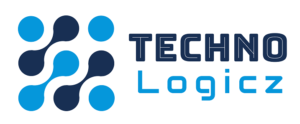In today’s distributed, microservices-driven architectures, applications and services—collectively known as workloads—interact across cloud platforms, APIs, and third-party services. Traditional credential-based authentication (e.g., embedding secrets or API keys) is error-prone and insecure. Workload identity addresses these challenges by providing a dynamic, managed identity for each workload, enabling seamless, fine-grained access control without manual secret distribution.
What Is Workload Identity?
Workload identity is a cloud-native mechanism where each application, container, function, or virtual machine is assigned its own identity—akin to a “service account”—that can be authenticated by an identity provider (IdP) like Azure Active Directory, Google Cloud IAM, or AWS IAM Roles Anywhere. Rather than embedding static credentials, workloads obtain short-lived tokens from the IdP and present them to access resources securely.
Why Workload Identity Matters
-
Eliminates Static Secrets
Hard-coded credentials in code or configuration files are a major source of breaches. Workload identity uses ephemeral tokens, reducing exposure. -
Least-Privilege Access
Assign minimal required permissions to each identity. For example, a container handling logging only needs write access to a specific storage bucket, not full storage admin rights. -
Automated Credential Rotation
Tokens automatically expire and rotate, removing the operational burden of manual secret management. -
Auditability and Compliance
Cloud IAM logs every token issuance and access decision, providing a clear audit trail for security reviews and regulatory compliance. -
Seamless Integration
Major clouds and Kubernetes platforms natively support workload identity, enabling consistent security across hybrid and multi-cloud deployments.
Core Components
| Component | Description |
|---|---|
| Identity Provider (IdP) | Manages service identities and issues short-lived tokens (e.g., Google Cloud IAM, AWS STS). |
| Service Identity | Unique identity bound to a workload (e.g., Kubernetes Service Account mapped to cloud IAM role). |
| Token Service | Exchanges workload credentials (e.g., Kubernetes JWT) for cloud-issued access tokens. |
| Resource Policy | IAM policy defining which workload identity can access a given resource and with what permissions. |
-
Workload Bootstraps
On startup, the workload uses its platform-specific service account (e.g., Kubernetes ServiceAccount) to request a signed JSON Web Token (JWT). -
Token Exchange
The workload presents this JWT to the cloud’s token service (e.g., AWS STS, Google Secure Token Service), which validates the identity and maps it to an IAM role. -
Token Issuance
The token service issues a short-lived access token with scoped permissions defined in the IAM role. -
Resource Access
The workload uses this token to call cloud APIs or access managed services, authenticating via standard HTTP headers. -
Token Refresh
As the token nears expiration, the workload transparently repeats the exchange process, ensuring uninterrupted access.
Implementations Across Cloud Platforms
Google Cloud: Workload Identity Federation
-
Kubernetes Integration: GKE ServiceAccounts map to Google service accounts.
-
External IdP Support: Federate identities from AWS, other clouds, or on-premises OIDC providers.
AWS: IAM Roles for Service Accounts (IRSA)
-
EKS Integration: Annotate Kubernetes service accounts with IAM roles.
-
Web Identity Federation: Use OpenID Connect to grant tokens to workloads.
Azure: Managed Identities for Azure Resources
-
System-Assigned: Azure automatically creates an identity tied to a VM, function, or app service.
-
User-Assigned: Pre-created identities that can be shared across multiple workloads.
Best Practices
-
Adopt Least Privilege
Define narrowly scoped IAM roles, granting only essential permissions. -
Use Short Token Lifetimes
Configure minimal token TTL to reduce risk if tokens are compromised. -
Enable Audit Logging
Turn on IAM audit logs to monitor identity usage and detect anomalies. -
Automate Identity Provisioning
Use infrastructure-as-code (Terraform, ARM Templates, CloudFormation) to consistently manage workload identities and policies. -
Enforce Mutual TLS (mTLS)
Combine workload identity with mTLS within service meshes (e.g., Istio, Linkerd) for end-to-end encryption and authentication.
Challenges and Considerations
-
Complex Policy Management:
Multiple microservices, each with unique identities, can lead to policy sprawl without proper tooling. -
Initial Setup Overhead:
Configuring federated identity and role mappings requires careful planning. -
Compatibility:
Legacy workloads or on-premises systems may lack native support, necessitating sidecar token exchangers or adapters.
Future Trends
-
Unified Identity Fabrics:
Centralizing workload identities across multi-cloud and hybrid environments via standards like SPIFFE/SPIRE. -
Credential-less Architectures:
Zero-trust models where cryptographic identities, not secrets, form the basis of all authentication. -
AI-Driven Policy Optimization:
Leveraging machine learning to analyze usage patterns and automatically refine IAM policies for least privilege.
Conclusion
Workload identity represents the cornerstone of secure cloud-native applications, removing static credentials, enforcing least-privilege access, and delivering robust auditability. By adopting platform-native identity solutions and best practices, organizations can confidently scale applications while minimizing security risk.

